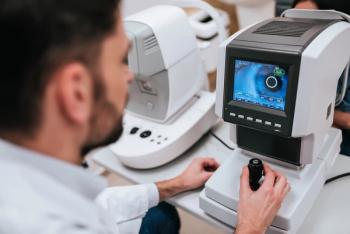The June edition of the “Cultural Responsiveness” blog by Latinos en Optometry and sponsored by VSP Vision highlights an article written by Bryce St Clair, OD, MPH, assistant professor of ophthalmology at the Johns Hopkins School of Medicine Wilmer Eye Institute in Baltimore, Maryland.
In his article, St Clair emphasizes the significance of tailoring care to individual patients by considering their cultural and socioeconomic backgrounds. He draws from his firsthand experiences of delivering care to immigrant and refugee communities in Houston, Texas, Columbus, Ohio, and currently in Baltimore, Maryland, to share valuable insights.
"There are so many ways in optometric practice that we customize treatment options to the patient’s age, disease severity, and ocular characteristics," writes St Clair in the blog post. "Similarly, we also need to individualize care by adapting to our patients’ cultural and socioeconomic realities."
Lessons learned in fostering connections from Bryce St. Clair, OD, MPH
- Make all patients feel welcome.
- Be patient with those who are new to the US.
- Offer solutions at a range of price points.
For St. Clair's thoughts on how to implement these values into practice, read the Cultural Responsiveness blog by Latinos en Optometry.
St Clair emphasizes the importance of optometrists demonstrating a vested interest in establishing connections with their patients in order to deliver more patient-centered eye care. He believes that building trust in every doctor-patient interaction is essential for patients to adhere to medical recommendations. In his article, he offers several actions optometrists and staff can implement to ensure all patients experience a sense of being welcomed and valued in their care.
St Clair’s blog is available on the Latinos en Optometry website.
About the Cultural Responsiveness blog
Latinos en Optometry has partnered with VSP Vision™ to create the "Cultural Responsiveness" blog series. This collaborative initiative aims to assist current and future practitioners in recognizing the significance of healthcare services that cater to the social, cultural, and linguistic needs of patients. Nonmembers of Latinos en Optometry who are interested in accessing the complimentary blog can subscribe here.










































